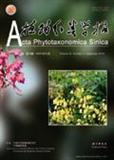WANG Wen-Tsai, LI Liang-Qian
J Syst Evol. 2005, 43(5): 431-488.
A new system of classification of the genus Clematis is proposed. The taxonomic history of the genus is briefly reviewed. On the basis of the analyses of various morphological and palynological characters, evolutionary trends of some characters are revealed as follows: 2. Seed germination: epigeal→hypogeal. 3. Leaf: (a) phyllotaxy: alternate→opposite→verticillate. (c) texture: herbaceous→papery→subcoriaceous or coriaceous. 4. Inflorescence: (a) position: terminal→terminal and axillary→axillary. (b) type: pedunculate, bibracteate, several-flowered cyme. (i) 3–4 times branched, 20–35-flowered cyme→many-branched ca. 100-flowered panicle. (ii) 1-flowered cyme→a single flower, pedicellate, but with peduncle and bracts wanting. 5. Flower: (a) Sexuality: bisexual→unisexual. (b) Posture: erect, with straight pedicel→pendulous, with recurved pedicel. 6. Sepal: (a) number per flower: 4 or 5→6–8. (b) aestivation: valvate→imbricate. (c) colour: white or yellow→blue, purple or red. (d) spreading direction: spreading→ascending→erect. (e) texture: herbaceous or papery→subcoriaceous or coriaceous. (f) shape: obovate→obovate-oblong, oblanceolate, lanceolate or oblong→narrowly oblong→linear. (g) apex: rounded or obtuse→acute→acuminate→attenuate (h) margin indumentum: glabrous or puberulous→with a narrow velutinous strip. (i) margin dilation: not dilated→dilated. (j) indumentum of adaxial surface: glabrous→puberulous→velutinous. 7. Stamen: (a) indumentum: glabrous→filament hairy yet anther glabrous→both filament and anther hairy. (b) filament: (i) linear→proximally or distally widened, or entirely so. (ii) flat→rugose. (c) anther: oblong, 0.8–3.5 mm long→narrowly oblong, 2–6 mm long→linear, up to 7–10 mm long. (d) connective: not projected→apex minutely apiculate, with an apiculum ca. 0.1 mm long→apex with a conic or subglobose projection 0.1–0.2 mm long→apex with a subulate projection up to 4 mm long or with a narrowly lamellate projection 1–10 mm long. 9. Staminode: (a) absent in bisexual flower→present in bisexual flower. (b) number per pistillate flower: numerous→few→zero. 10. Style: not elongate→elongate and plumose→slightly elongate and appressed-puberulous, then tail-like or subulate in shape→very short, slightly or not elongate, appressed- puberulous or glabrous. 11. Fruit: not complanate, nor rimmed, nor marginate→complanate, narrowly to tumidly rimmed→complanate, broadly marginate or winged. According to the evolutionary trends mentioned above and mainly according to the floral structure, the relationships among the 15 sections of Clematis are discussed, and four evolutionary stocks are recognized. Of them, the C. montana stock, in which C. brevipes, C. potaninii, C. montana etc., all with spreading, white, obovate sepals and glabrous stamens, are included, is regarded as the primitive group of the genus, whereas the other three, C. vitalba stock, C. connata stock, and C. alpina stock, are regarded as more advanced. All these four stocks might be derived from a putative extinct primitive group of the genus, which might possess the most primitive vegetative and reproductive characters. The four stocks are all treated as subgenera in the present system. Finally, a systematic enumeration of all the infrageneric taxa is presented and their brief diagnoses are given.

